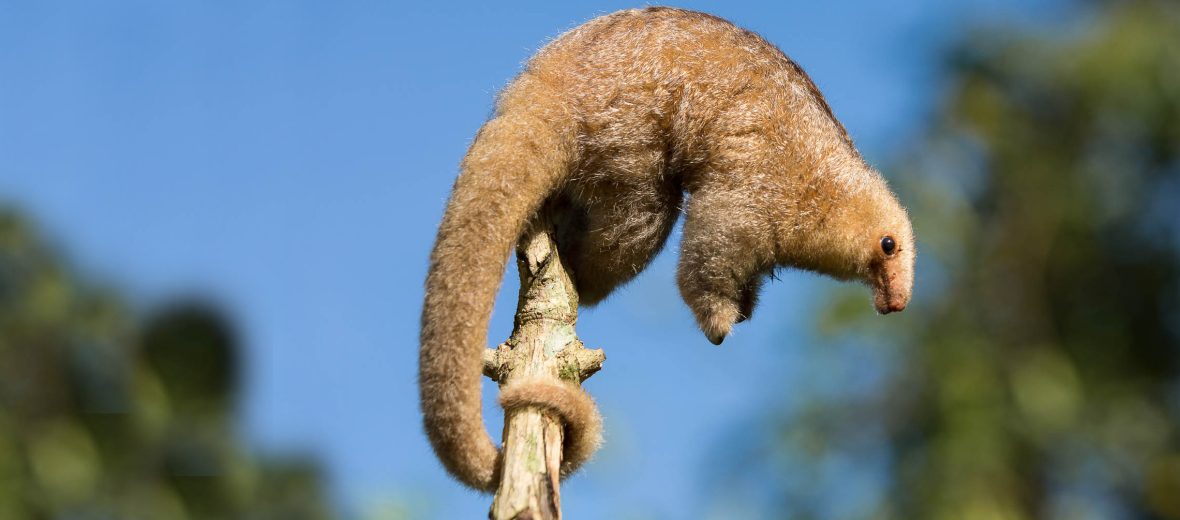
The silky anteater, aka pygmy anteater, can be found in the southern portion of Mexico, Central America, and South America. They prefer tropical evergreen forests, semi-deciduous forests, and mangrove forest habitats. Even though these cute critters face the threats of habitat destruction and loss at the hands of the logging industry; hunting; and trapping, they are still listed as Least Concern by the IUCN. Their population trend is unknown at this time though.
First the Stats…
Scientific name: Cyclopes didactylus
Weight: Up to 14 ounces
Length: Up to 18 inches, plus up to a 9.4 inch tail
Lifespan: Up to 2 years
Now on to the Facts!
1.) These critters are arboreal (spend their lives in trees).
2.) Their tails are partially prehensile (used as an additional appendage).
3.) Silky anteaters are nocturnal (active at night).
4.) They are solitary and only come together to mate.
5.) The primary predators are harpy eagles and hawks.
But wait, there’s more on the silky anteater!
6.) When threatened, they will stand on their hind feet and keep their forelimbs close to their face, striking with their sharp claws.
7.) As their name suggests, they primarily eat ants. But they will also consume termites and small beetles.
Did you know…?
Silky anteaters can consume up to 5,000 ants each night.
8.) Females undergo up to a 150 day gestation (pregnancy) that yields a single pup.
9.) Pups begin taking solid food when they measure up to 1/3 the length of the adults.
10.) Both parents participate in the rearing of their young.
But wait, there’s still more on the silky anteater!
11.) These anteaters lack teeth, and instead just lap up insects and swallow them whole.
12.) Their scientific name loosely translates to “2-toed circle-foot,” and is in reference to the 2 claws present on their forelimbs, plus their ability to grab onto branches.
Now a Short Silky Anteater Video!
Be sure to share & comment below! Also, check out the Critter Science YouTube channel. Videos added regularly!
Want to suggest a critter for me to write about? Let me know here.
Some source material acquired from: Wikipedia & IUCN
Photo credit: Quinten Questel



